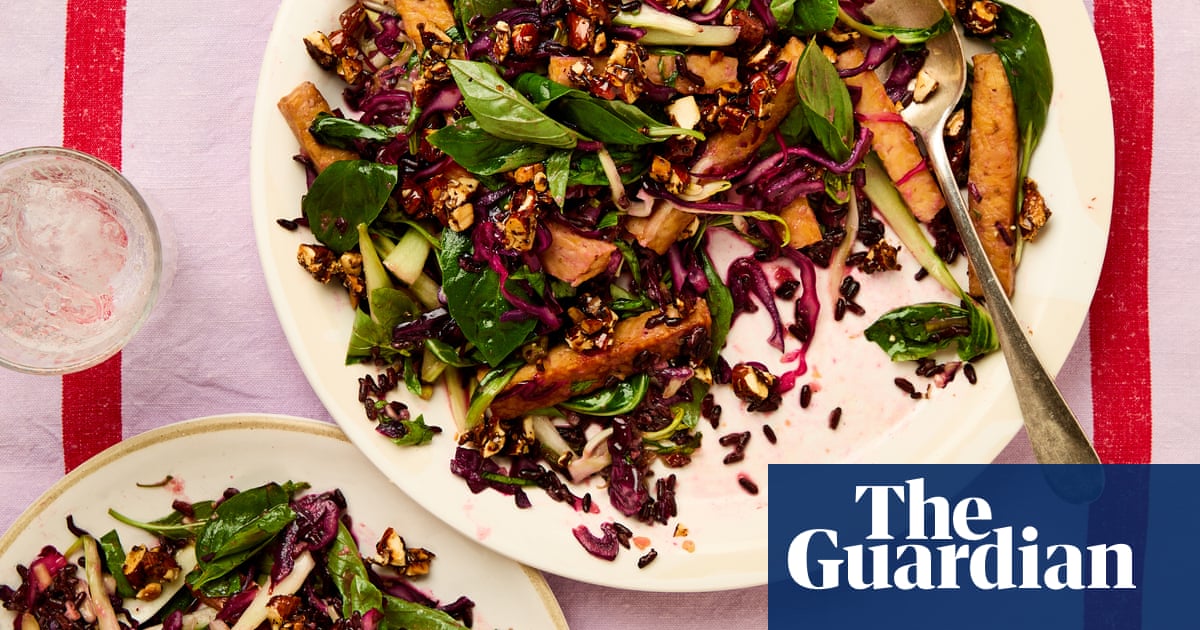I’m a subscriber toThe Imperfectionist, Oliver Burkeman’s newsletter on building a meaningful life, in which he recently wrote about navigating life via “aliveness”, which he describes as “a subtle electrical charge”. I chase that feeling a lot in the kitchen, and it’s how I feel when I eat a great salad, all vibrant and energised, as if I’ve just cycled through gorgeous countryside or been on a hike. I find it hard to write recipes for such salads, though, perhaps because there are often so many ingredient variations and little precedence, but today’s one made the cut. If you make it, please let me know if it made you feel “perky” in any way.
Tempeh is widely available in big supermarkets these days, and I like the ones produced byTibaandTofoo, but I also love the small-batch tempehs made byTempeh MeadesandClub Cultured.
Prep20 minCook25 minServes4generously125g black rice(not glutinous)Fine sea salt3 tbsp toasted sesame oil4 tbsp olive oil2 tbsp white miso paste– I likeMiso Tasty2 limes, zested and juiced (to get 3 tbsp juice)2 garlic cloves, peeled and minced4cm x 3cm piece fresh ginger, peeled and finely grated2½ tbsp maple syrup2 spring onions, trimmed, finely sliced, rinsed and drained60g whole almonds, roughly chopped300g tempeh, cut into 1cm-wide strips200g red cabbage, finely shredded2 pak choi(250g), washed and thinly sliced lengthways50g bunch basil, leaves picked to get 30g
Boil the rice in salted water according to the packet instructions (as a general rule of thumb, I use a teaspoon of salt for every litre of water), then drain and put to one side.
While the rice is cooking, get on with the rest of the salad. In a big bowl, whisk the sesame oil, half the olive oil, the miso, lime juice, garlic, ginger, a tablespoon of the maple syrup and three-quarters of a teaspoon of salt. Throw in the sliced spring onions and toss.
Have ready a plate to the side of the stove. Put the almonds in a large frying pan, turn on the heat to medium and toast, stirring regularly, for eight minutes, until fragrant. Drizzle over the remaining tablespoon and a half of maple syrup and stir for another minute, until caramelised. Transfer to the plate and sprinkle with a big pinch of salt.
Rinse out the pan, then heat the remaining two tablespoons of olive oil. Once it’s hot, lay in the tempeh strips and fry for three minutes on each side, until golden and crisp. Add the cabbage, cook for another three minutes, until wilted, then tip the lot into the dressing bowl. Add the pak choi to the bowl, too, toss to combine, then fold in the rice and basil leaves.
Tip out in a big mound on to a platter and serve.
